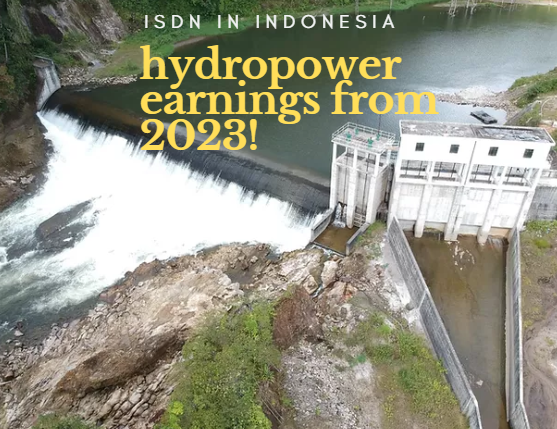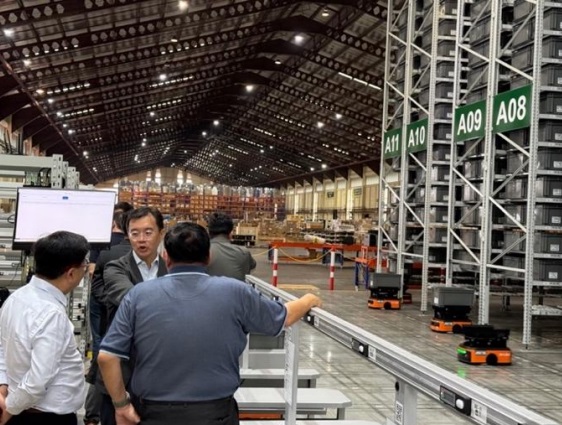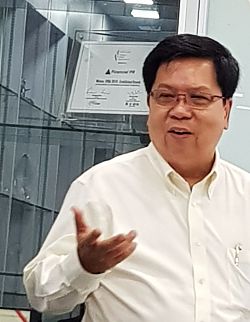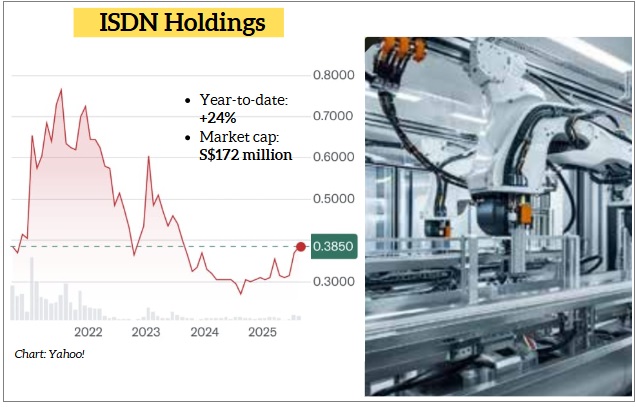|
ISDN Holdings' 1HFY25 profit figure of S$1.3 million may not convey it but the company is riding the wave of Asia’s industrial and green energy boom. "Every sector, every region, we have good growth," he stated, emphasizing a 35% increase in core shareholder profit to S$4.5 million when excluding unrealized foreign exchange losses from its hydropower business in Indonesia and non-recurring items. |
Here are financial metrics for 1HFY25:
|
Metric |
1H2024 (S$'m) |
1H2025 (S$'m) |
YoY Change |
|
Revenue |
174.6 |
212.9 |
+22.0% |
|
Gross profit |
44.3 |
50.5 |
+13.8% |
|
Gross profit margin (%) |
25.4% |
23.7% |
-1.7ppt |
|
Operating expenses |
34.2 |
34.6 |
+1.2% |
|
Profit before tax |
8.5 |
7.5 |
-12.2% |
|
Profit after tax |
5.8 |
3.8 |
-33.7% |
|
Profit attributable to shareholders |
3.8 |
1.3 |
-66.0% |
|
Net profit margin (%) |
3.3% |
1.8% |
-1.5ppt |
|
Adjustments for unrealised and non-recurring items: |
|||
|
Unrealised foreign exchange (loss)/gain |
0.3 |
(4.5) |
n.m. |
|
Core profit attributable to shareholders |
3.3 |
4.5 |
+35.1% |
Gross profit rose 14% to S$50 million, though margins dipped to 23.6% due to low-margin construction income from hydropower projects.
Unrealized forex losses of S$5 million—stemming from USD-denominated long-term receivables amid a 6.9% SGD appreciation against the USD—dragged net profit to S$1.3 million.
Mr Teo noted, "This is really beyond our control."
On a normalized basis, core profit grew 35%, with hydropower's operating net profit (pre-translation) at S$3.5 million.
Renewable energy, focused on hydropower in Indonesia, saw growth of over 100%, contributing S$5.4 million in revenue on a constant currency basis.
Three operational plants (24.6 MW capacity) generate steady cash flow, with two more (20 MW) nearing commercialization by early 2026.
Mr Teo projected an additional S$10+ million in annual income from these.
| Capturing growth amid tariff impacts |
 "One of the strategies that ISDN has been quite patient and invested quite a lot of money to build out is, an expanded presence throughout Asia. So we have China, Vietnam, Singapore, Malaysia, Taiwan. Although tariffs may be higher in one country, the trade will tend to shift to compensate for that to other countries. So what ISDN has done is cover all of the major production nodes, all of the major production geographies throughout Asia. That's quite powerful." -- Keith Toh, Non-Executive Director, at 1H2025 results briefing. |
The recent ~S$2 million, 51% stake acquisition in PT Funda Konstruksi Engineering bolsters engineering capabilities, enabling end-to-end project development.
"We synergize very well... we can even venture into other opportunities outside Indonesia," Mr Teo said.
PT Funda provides end-to-end hydropower services, covering both upstream EPC and downstream O&M, complementing ISDN’s existing renewable energy operations to capture full project lifecycle value in Indonesia.
Strategically, ISDN is capitalizing on Asia's foreign direct investment boom, fueled by U.S.-China tensions and "China-plus-one" shifts.
Investments in Taiwan for high-end linear motors and Malaysia for sales outlets position the company for semiconductor growth.
Partnerships with Harmonic Drive, Schneider Electric (photo below), and Maxon Motor enhance competitiveness. Schneider Electric executives visit 3PL (Third Party Logistics) Smart Warehouse facility designed, built and delivered by ISDN. Photo: ISDN
Schneider Electric executives visit 3PL (Third Party Logistics) Smart Warehouse facility designed, built and delivered by ISDN. Photo: ISDN
New ventures include drone services, robot dogs, and AI solutions, with Teo eyeing electrification in boats and trucks.
Data centers emerge as a key growth area, with ISDN's Unified Operation Center software addressing efficiency challenges: "80% increase in engineering efficiency, 15% lesser staff, lower energy consumption," Mr Teo said.
ISDN's dividend policy remains at least 25% of PATMI, with no urgency to spin off renewables, though options like IPO or tokenization are under review.
|
Excerpts of Q&A session at 1H2025 results briefing: Group MD Teo Cher Koon: We focus on niche markets and can maintain our gross profit margin by avoiding the highly competitive mass market where many SMEs struggle. So generally we are looking at the GDP growth of China -- as long as they are going positively, we should be able to you know outperform that. 
Q: Is ISDN participating in data center projects in Malaysia and Singapore? Teo Cher Koon: Yes, we’re active in Singapore, Malaysia, and Indonesia, offering software and engineering solutions for data centers, which are seeing strong growth, especially in Malaysia with a 21% CAGR. Data centers are one of our areas of growth, and right now we are able to offer software and M&E together. Mr Teo concluded, "We continue to invest... to capitalize on industrial 4.0 and high-quality revenue from renewable energy." CGS's report says downside risks are: weak customer demand if global economy continues to slow, and possibility of bad debts as economic conditions worsen. |
ISDN's 1HFY25 results announcement is here.







